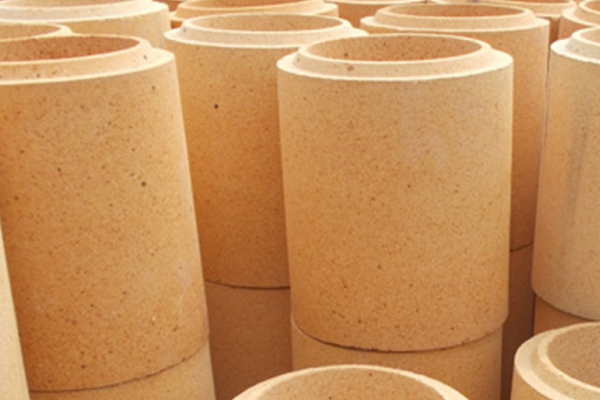Introduction
High-temperature processes, wie zum Beispiel die Metallveredelung, Glasherstellung, und Zementproduktion, erfordern Materialien, die extremen Temperaturen und rauen Umgebungen ohne nennenswerte Beeinträchtigung standhalten.
Feuerfeste Steine sind wesentliche Bestandteile in Hochtemperaturprozessen, as they provide protection to the equipment, prevent heat loss, and maintain temperature uniformity. Refractory fire bricks can be made from a variety of materials, each with its unique properties and applications.
PER Refractories will discuss here the role of refractory bricks made of different materials in high-temperature processes, including their properties, types, and applications.


Properties of Refractory Bricks
Refractory bricks are designed to resist high temperatures and harsh environments, making them ideal for use in high-temperature processes. The properties of refractory bricks that make them suitable for such applications include:
High Melting Point: Fire-resistant bricks have a high melting point, allowing them to withstand high temperatures without melting or degrading.
Geringe Wärmeleitfähigkeit: Refractory bricks have low thermal conductivity, which prevents heat loss and helps to maintain temperature uniformity in the process.
Chemische Stabilität: Flame resistant bricks are chemically stable and resistant to corrosion and erosion, ensuring long-term durability.
Mechanical Strength: Refractory bricks have high mechanical strength, allowing them to withstand mechanical stresses and vibrations without breaking.
Types of Refractory Bricks
Refractory bricks can be made from a variety of materials, each with its unique properties and applications. The main types of refractory firebricks are:
Fireclay Bricks: Fireclay bricks are made from clay and other materials. They have a low cost and are commonly used in low-temperature applications, such as residential fireplaces.
Kieselsteine: Quarzsteine are made from silicon dioxide. They have a high melting point and are commonly used in glass manufacturing.
Magnesia-Steine: Magnesia bricks are made from magnesium oxide. They have a high melting point and are commonly used in steelmaking.
Ziegel mit hohem Tonerdegehalt: High alumina bricks are made from aluminum oxide. They have a high melting point and are commonly used in high-temperature applications, such as furnace linings.
Chrom-Steine: Chrome bricks are made from chromium oxide. They have a high melting point and are commonly used in the production of ferrochrome and other alloys.


Applications of Refractory Bricks
Refractory bricks are used in a variety of high-temperature processes, including metal refining, Glasherstellung, und Zementproduktion. Some of the common applications of refractory bricks made from different materials are:
Furnace Linings: Refractory bricks are used to line the interior of furnaces, protecting the furnace walls from high temperatures and preventing heat loss.
Different types of refractory bricks are used depending on the temperature and environment of the process. Fireclay bricks are commonly used in low-temperature applications, while alumina bricks are used in high-temperature applications.
Kiln Linings: Refractory firebricks are used to line kilns, which are used in the manufacturing of Keramik, Zement, und andere Materialien.
The refractory lining protects the kiln walls from high temperatures and prevents heat loss. Silica bricks are commonly used in kiln linings due to their high melting point and chemical stability.
Crucibles: Refractory fire bricks are used to make crucibles, which are containers used to hold molten metals during the casting process.
The refractory material prevents the crucible from melting and ensures that the metal remains at a consistent temperature. Magnesia bricks are commonly used in crucibles due to their high melting point and resistance to corrosion.
Glass Furnaces: Fire bricks are used extensively in the glass manufacturing industry.
Glass furnaces require a lining that can withstand high temperatures and harsh chemical environments. Silica bricks are commonly used in glass furnace linings due to their high melting point and resistance to alkalis.
Stahlherstellung: Refractory bricks are used in steelmaking to line the steelmaking vessel and protect it from high temperatures and chemical reactions.
Magnesia bricks and alumina bricks are commonly used in steelmaking due to their high melting point and chemical stability.
Refractory Brick Manufacturer and Supplier
Abschließend, refractory bricks play a crucial role in high-temperature processes by providing protection to the equipment, preventing heat loss, and maintaining temperature uniformity.
The properties of refractory bricks, such as high melting point, geringe Wärmeleitfähigkeit, Chemische Stabilität, und mechanische Festigkeit, make them suitable for use in various high-temperature applications.
Different Arten von feuerfesten Ziegeln, such as fireclay firebricks, Schamottsteine aus Silikat, magnesia bricks, Ziegel mit hohem Tonerdegehalt, and chrome bricks, are used depending on the temperature and environment of the process. The use of appropriate refractory bricks in high-temperature processes can ensure long-term durability and efficiency.
